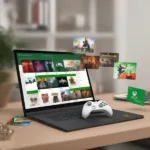Understanding effective kill shots is crucial for ethical and responsible big game hunting. It ensures a quick and humane harvest, minimizing suffering and maximizing respect for the animal. This article delves into the intricacies of kill shots, covering various species, calibers, and shot placement considerations.
Understanding Kill Shot Placement
Kill shot placement relies on targeting vital organs, causing rapid incapacitation. The primary targets are the heart and lungs, located within the chest cavity. A well-placed shot disrupts the circulatory and respiratory systems, leading to a swift and ethical kill. Proper shot placement depends heavily on understanding the animal’s anatomy and behavior.
Heart and Lung Shots
The heart-lung area presents the largest target and offers the highest probability of a quick kill. Aiming slightly behind the shoulder, about one-third of the way up the body, is generally recommended for most big game species. However, variations exist depending on the animal’s size and stance.
Head Shots
Head shots are generally discouraged due to the smaller target area and the increased risk of a non-lethal wound. While a precise head shot can result in instant death, slight deviations can lead to unnecessary suffering. Only experienced hunters with exceptional marksmanship skills should consider head shots, and only in specific circumstances.
 Heart and Lung Shot Placement on a Deer
Heart and Lung Shot Placement on a Deer
Caliber Selection for Big Game Hunting
Choosing the appropriate caliber is essential for ensuring sufficient energy transfer to achieve a clean kill. The caliber must match the size and toughness of the game animal. Underpowered calibers can lead to wounding and prolonged suffering, while overpowered calibers can cause excessive damage to the meat.
Matching Caliber to Game Size
Larger game animals like elk and moose require larger calibers with greater energy transfer than smaller species like deer. Consult local hunting regulations and experienced hunters to determine the minimum recommended caliber for the specific species you intend to hunt.
Bullet Selection and Performance
Different bullet types offer varying performance characteristics. Expanding bullets, such as soft points and hollow points, are designed to expand upon impact, creating a larger wound channel and increasing energy transfer. Bonded bullets are designed to retain their weight, offering deeper penetration, especially for larger game animals.
Factors Influencing Kill Shot Effectiveness
Several factors can influence the effectiveness of a kill shot beyond shot placement and caliber selection. Understanding these factors can help hunters maximize their chances of a quick, ethical kill.
Range Estimation and Ballistics
Accurate range estimation is critical for proper bullet trajectory and impact energy. Understanding ballistics and how your chosen caliber performs at various distances is essential for making effective shots.
Animal Behavior and Movement
Big game animals are rarely stationary targets. Understanding their behavior and anticipating their movements is vital for placing a well-aimed shot. Consider factors such as wind direction, terrain, and the animal’s alertness level.
Ethical Considerations and Hunter Responsibility
Ethical hunting practices prioritize a quick and humane harvest. Hunters have a responsibility to ensure their skills and equipment are adequate for the task. Proper shot placement, caliber selection, and a commitment to ethical hunting practices are essential for responsible big game hunting.
 Hunter Preparing for a Shot on Big Game
Hunter Preparing for a Shot on Big Game
Shot Placement for Specific Big Game Animals
While general principles apply to kill shots, specific considerations exist for different big game animals.
Whitetail Deer
Aim for the heart-lung area, slightly behind the shoulder.
Elk
Due to their larger size, a slightly higher shot placement may be necessary to reach the vital organs.
Moose
Moose possess a large chest cavity. Aim for the heart-lung area, considering the animal’s angle and stance.
Essential Gear for Ethical Big Game Hunting
Beyond firearms and ammunition, several pieces of gear contribute to ethical and successful hunting.
Rangefinders
Accurate range estimation is crucial. A quality rangefinder provides precise distance measurements, enabling accurate shot placement.
Binoculars and Spotting Scopes
These tools aid in identifying and evaluating game animals before taking a shot, ensuring a responsible and ethical harvest.
Conclusion
Effective kill shots in big game hunting require a combination of skill, knowledge, and ethical considerations. Understanding shot placement, caliber selection, and the factors influencing shot effectiveness are essential for ensuring a humane harvest and respecting the animal. By prioritizing ethical hunting practices, we can contribute to the conservation and sustainable management of big game populations. Remember to always consult local hunting regulations and seek guidance from experienced hunters to enhance your skills and knowledge.
FAQ
-
What is the most effective kill shot for big game?
The heart-lung shot, targeting the vital organs within the chest cavity, is the most effective kill shot for big game. -
Why are head shots generally discouraged?
Head shots are discouraged due to the smaller target area and the increased risk of a non-lethal wound, causing unnecessary suffering. -
What factors influence kill shot effectiveness?
Factors influencing kill shot effectiveness include shot placement, caliber selection, range estimation, animal behavior, and environmental conditions. -
How do I choose the right caliber for big game hunting?
Caliber selection depends on the size and toughness of the game animal. Consult local regulations and experienced hunters for recommendations. -
What are some essential gear items for ethical big game hunting?
Essential gear includes a quality rifle, appropriate ammunition, a rangefinder, binoculars, and a spotting scope. -
Why is ethical hunting important?
Ethical hunting ensures a humane harvest, minimizing animal suffering and promoting responsible wildlife management. -
Where can I find more information about hunting regulations in my area?
Contact your local wildlife agency or department of natural resources for information about hunting regulations and licensing requirements.

